Spring Clean-up of Odds and Ends
A variety of things I've seen over the past few months
It's time to clear my desktop from a variety of photos that I liked but that didn't fit into any other themed 'group'.
Check out the squirrel below, seen at the Paton Hummingbird Center in Patagonia. Would you guess this is an Arizona Gray Squirrel or a Mount Graham Red Squirrel? If you said a Red Squirrel, you would be wrong. Red Squirrels only exist on Mount Graham and they are much less red than this guy. Arizona Gray Squirrels typically show some rust on the rump and lower back. So this is a Gray Squirrel that is very red!! There is variability in nature and among squirrels, and this is an extreme example of an Arizona Gray!! (Thanks Jeff B. for helping me out with this ID.)
We see more Phainopeplas in Tucson during the winter months. Also known as a Silky Flycatcher, this bird was perched atop a mesquite tree along the Rillito River one very cold December morning. The full moon was behind him. Birdnote did a recent piece on this "glistening" bird. Listen here
Abert's Towhees are large sparrows and a Sonoran Desert specialty. Their muted colors match the browns of the desert. This is one species where the adult males and females have the same plumage.
Northern Harriers are an interesting group of raptors. We see them in flat lands in southern Arizona during the winter. At one farm, I saw two Northern Harriers flying together. This may be a mated pair getting ready to fly back north for breeding season. Check out those long wings and the long tail with a white rump. Birdnote tells us about the Harriers’ "Sky Dancing"
For two months, Rock Wrens were common at one farm. They would pop up along irrigation ditches. For the past few weeks though the Rock Wrens seem to have disappeared. I don't know why that is. Rock Wrens get their name from their usual habitat of rocky terrain but they are a species that have adapted well to human activity. Thus, they see the cement irrigation ditches as a habitat worth living in.
White-Crowned Sparrows are a very common wintering sparrow in the Sonoran Desert. Although they have black and white striped crowns, the name does serve them well. This bird was puffed up to stay warm one cold winter morning.
Yes, I also see you too!!
Generally, sparrows do not have dramatic looks. But the Lark Sparrow is "Not Just Another Little Brown Bird" according to Birdnote. Listen here to find out why. Looking at this bird’s face, you can see what Birdnote is talking about.
Lark Buntings are another sparrow species that, in breeding season, look stunning. At that time of year the males are jet-black with a white wing patch. By the time they migrate to our Sonoran Desert in the fall, the males have lost the black and are a streaky dark brown. They still have somewhat of a white patch that you can see at the front of their wings.
The final sparrow of the day is the Savannah Sparrow. This winter visitor has an interesting facial pattern and a very tiny bill for a seed eater. Birdnote lets us listen to its soft 'buzzing' song here
That's this month's odds and ends! I hope you enjoyed them.


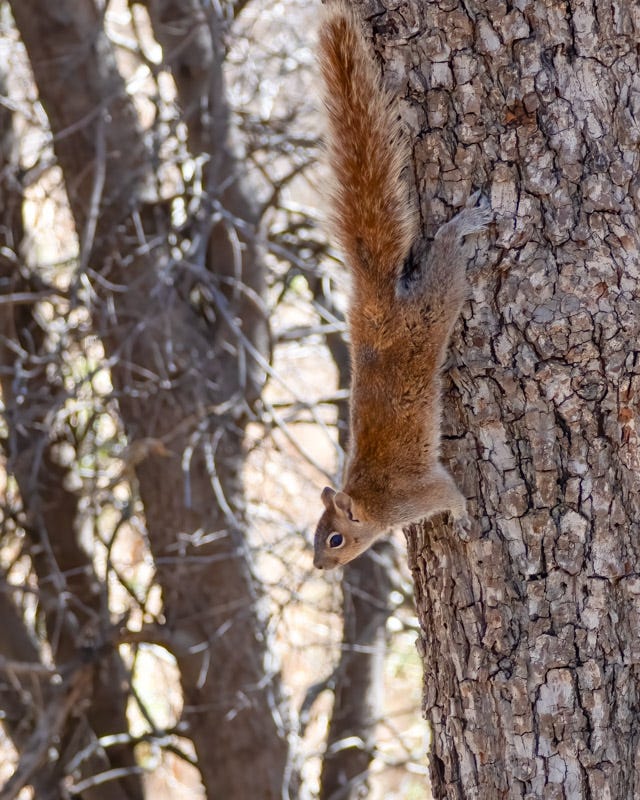

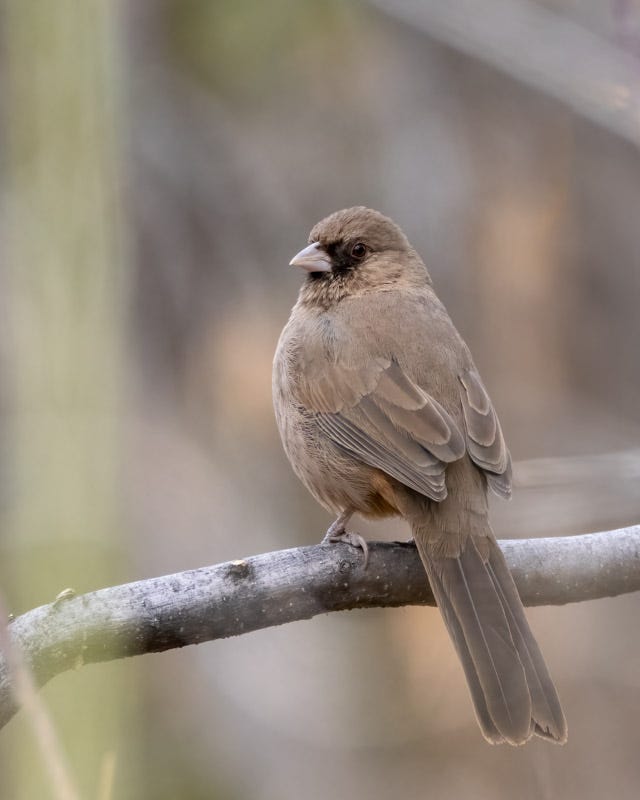


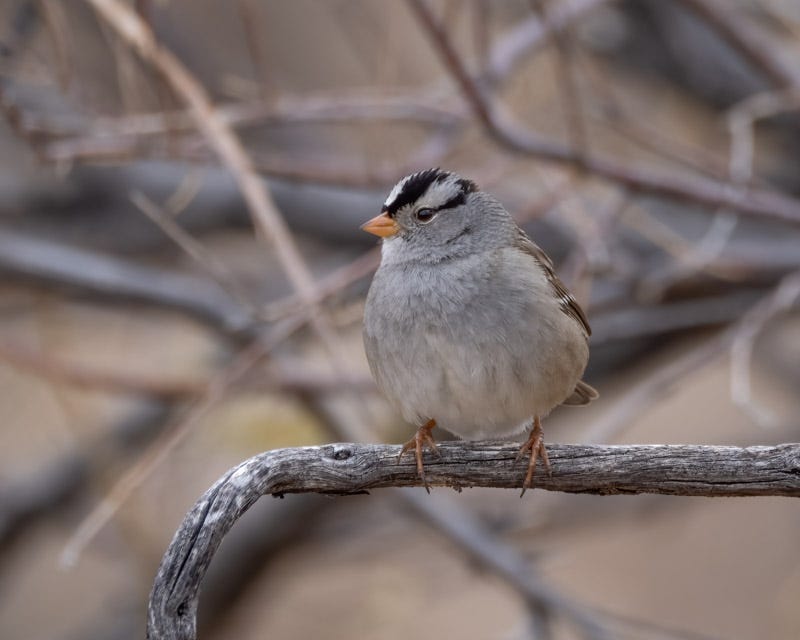
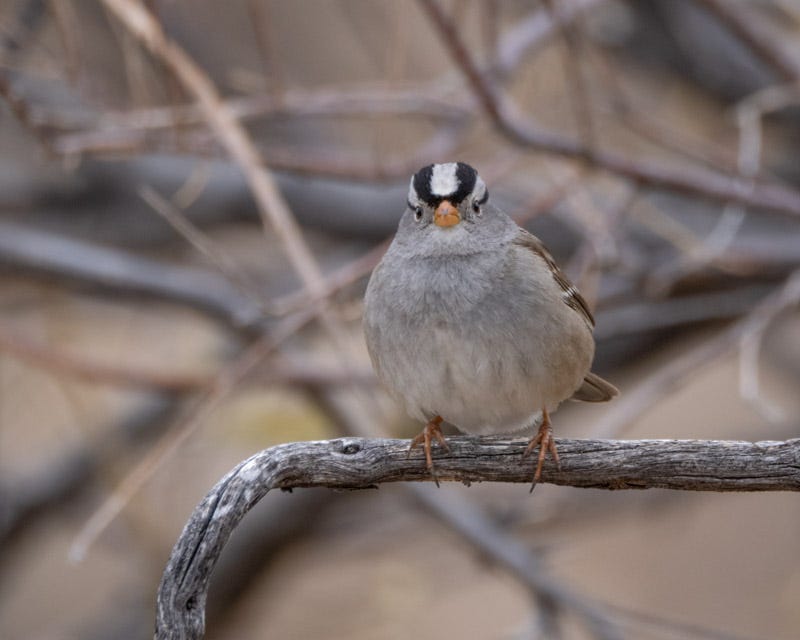

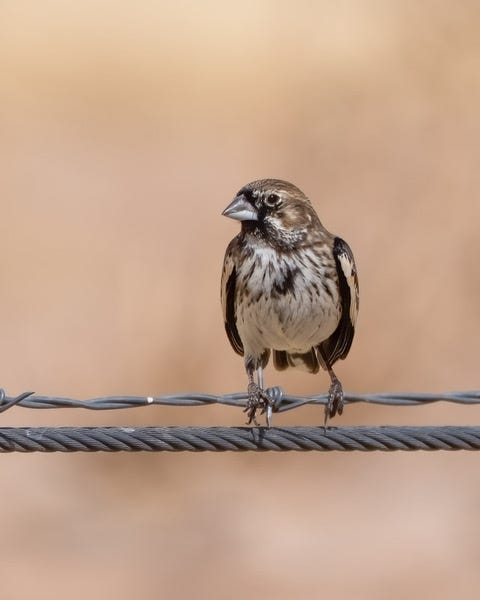
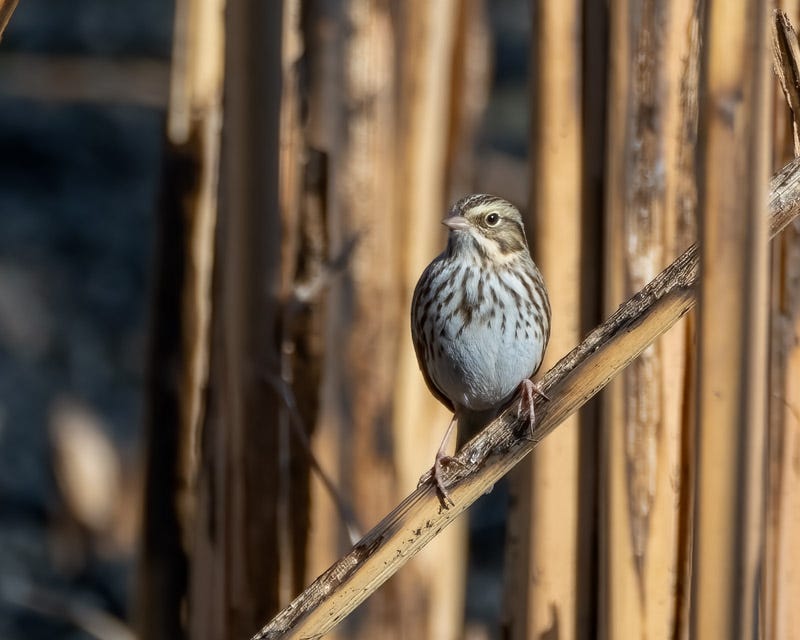
Interesting commentary. I especially like the picture of the Phainopepla with the full moon behind it.
Great Birdnote links. The goth cardinal! Love it